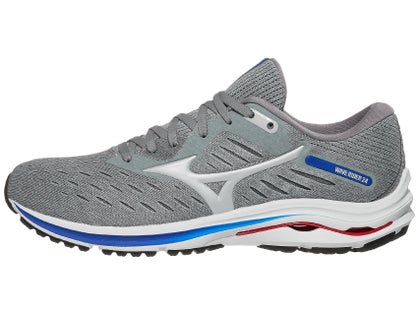

I received the color DIRECTOIRE BLUE-WHITE, not a huge fan but Mizuno has done a great job with offering them in many other colors that will surely please everyone’s taste. I usually always wear a size 8 but these were very snug and as I mentioned earlier, wished I would have gotten them a half size bigger. It’s a good mix-up to have in my running shoe rotation.Īnother thing I noticed was how tight the upper was around my midfoot and toe box. When I first placed my feet into them I could immediately notice the 12mm heel drop. They look very similar to one another and they felt alike. My first impression when I opened the box was that I thought they were the Mizuno Wave Inspire 18s. They will both give you a good balance of stability and responsiveness. When comparing a shoe of the same brand, the Mizuno Wave Inspire 18. If I had to pick which pair I liked better it would be the Saucony Triumph 20. Both are close in price for daily trainers, have comfy breathable uppers, and great choices for heel strikers. For the durability and all the features this shoe offers, I would say that the price is right and is validated.Ī shoe from a different brand that has some similarities is the Saucony Triumph 20. Although, I have seen them on sale on a few websites for $84 and $93.


It falls into the typical daily trainer price range. Not too heavy but not extremely lightweight either. It runs extremely narrow and is a firm-fitting shoe. It does have a 12mm heel drop that might not be for everyone. The quality is easily known when you look at them. Mizuno plays it safe with this updated version. Traditional is the word I keep seeing when describing the Wave Rider 26. And that has let Mizuno offer lighter shoes without sacrificing cushioning.It’s a daily trainer with no bells or whistles but gets the job done. It’s still a far cry from running on clouds or sand, but it’s not as firm as AP+ was, although just as responsive. The best I can describe U4ic compared to AP+ is that U4ic feels spongier. And while U4ic still feels more responsive than other midsoles on the market, it is softer than the old AP+. It first featured in their light weight trainer, Wave Sayonara, and has made its way into every Mizuno running shoe since then. In 2013, Mizuno released the latest generation of their foam: U4ic (pronounced, “Euphoric”).

Mizuno wants you to feel like you are landing on firm ground, not sinking into the sand. It’s like running on a sandy beach: the landing is soft, but it feels like you have to work harder to keep your legs moving. While that might not sound like the most comfortable experience in the world, the tradeoff is a more responsive ride. You’ll feel like your feet are landing on the ground, not the clouds. That means Mizuno shoes tend to be on the firmer side. Mizuno shoes are characterized by a responsive feel. EU4IC and EU4ICXĮvery running shoe maker that uses EVA foam to create the midsole of their running shoes will use a specific formula in order to produce a feel that is specific to them. But if you see a Wave plate, then you know you’re looking at a Mizuno running shoe. Sometimes a shoe might feature a double Wave plate. The length and shape of the plate might differ. As a result, even their neutral shoes will have some inherent stability, usually much more than comparable shoes from other makers.Īlmost all Mizuno running shoes will have some type of Wave plate. Cardboard bends and folds very easily in one direction, but is very difficult to twist side-to-side. The idea is that the Wave plate will absorb impact and disperse it throughout the length of the plate, like a shock absorber.Īnother feature of the Wave plate is its inherent stability.


 0 kommentar(er)
0 kommentar(er)
